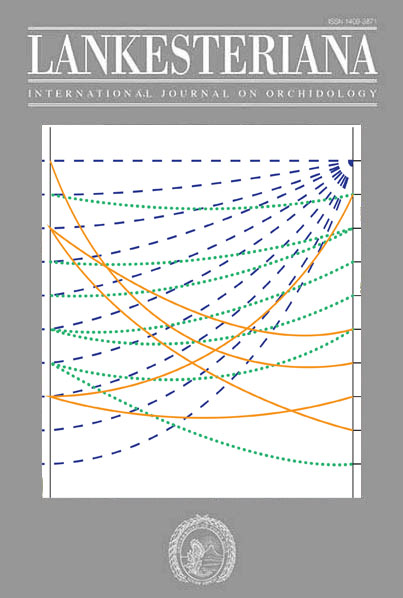Endophytic fungi associated with roots of epiphytic orchids in two Andean forests in Southern Ecuador and their role in germination
DOI:
https://doi.org/10.15517/lank.v20i1.41157Abstract
Orchids are known to establish complex relationships with endophytic fungi throughout their life cycle, and particularly during germination of their reserves-deprived seeds. Characterizing generalist or specialist interactions between orchids and associated fungi is key to supporting orchid conservation efforts. Here, endophytic fungi associated with roots of epiphytic orchids were studied in two montane Andean forests in Southern Ecuador. Orchid root samples were collected from ten ~500 m2 plots distributed between two neighboring forests. Endophytic fungi associated with these roots were then isolated, cultured, and identified by sequencing of rDNA markers. In total, 52 pure isolates were recovered from the roots of 10 orchid species. These isolates were classified into nine taxonomic groups except for one isolate that remained unclassified. Most fungal isolates were found in roots of up to two different orchid species; however, Coprinellus radians was found in the roots of all sampled orchids. The potential of C. radians to promote germination of orchid seeds was tested in a separate assay using seeds from two orchid species different than those found in the experimental forest plots. Of the two C. radians isolates tested, one improved germination in the two orchids evaluated to a level about half of that observed in seeds germinated in nutrient-rich medium (Phytamax) and above the null germination observed in plates without the fungus. Together, these results revealed a generalist relationship between C. radians and all the studied epiphytic orchids and the potential role of this fungus as a promoter of orchid seed germination.
Key Words: Agaricales, Epidendrum, symbiotic germination
Downloads

Downloads
Published
How to Cite
Issue
Section
License
According to the Open Access policy promoted by the University of Costa Rica, all the papers published by Lankesteriana are licensed under the Creative Commons copyright and can be downloaded free of charge. The journal holds copyright and publishing rights under the CC BY-NC-ND 3.0 CR license.
Before the publication of the materials submitted by the author(s) in LANKESTERIANA, the author(s) hereby assign all rights in the article to the Lankester Botanical Garden.




